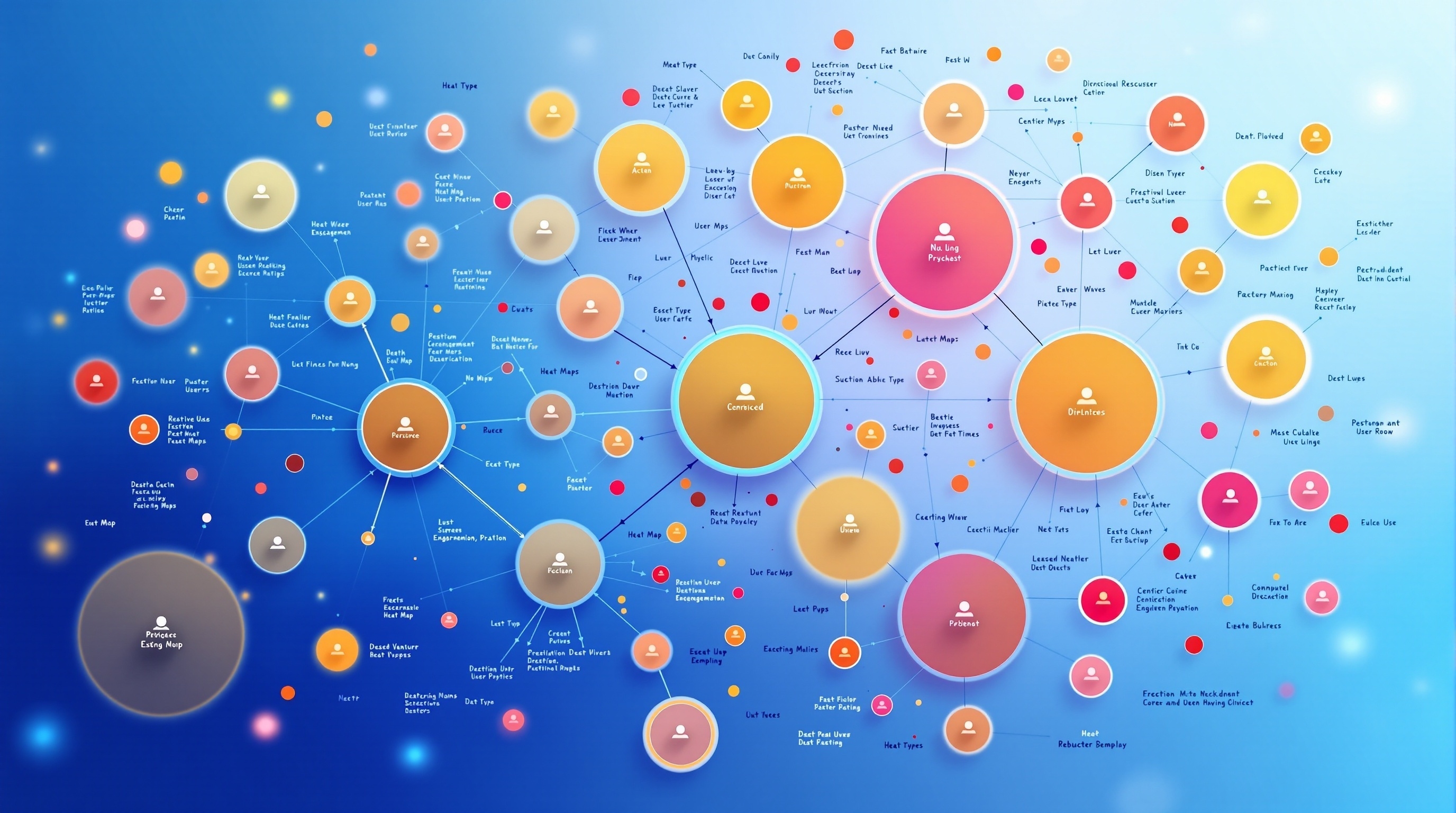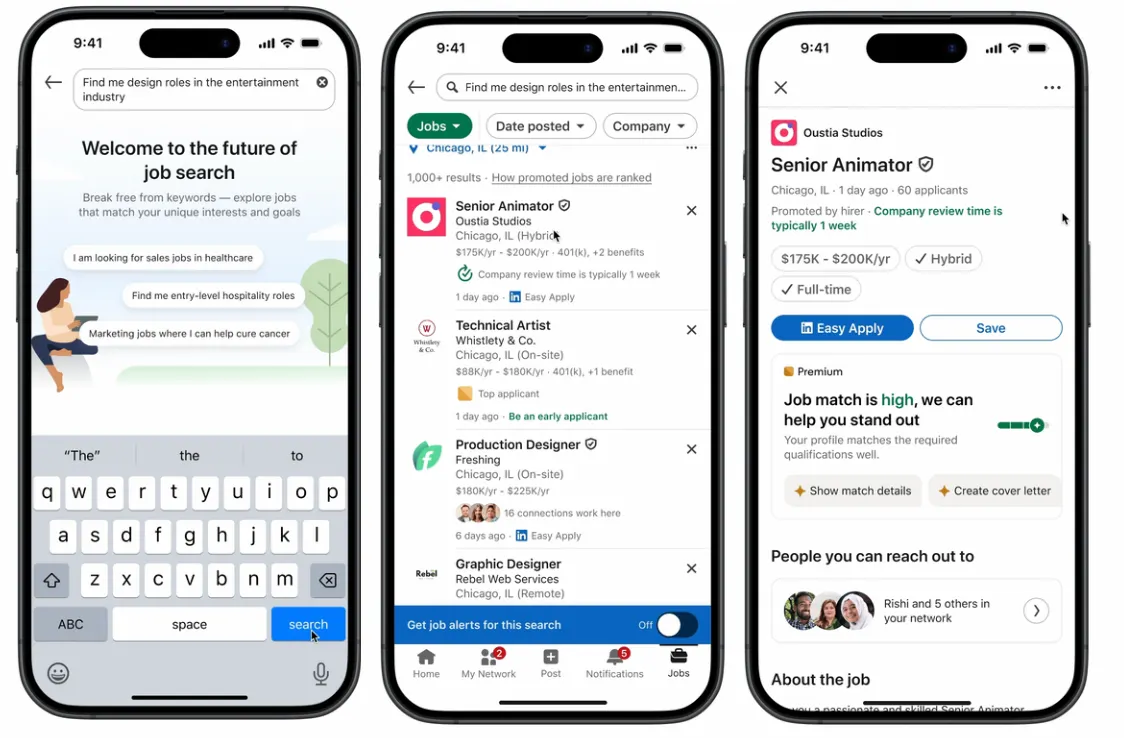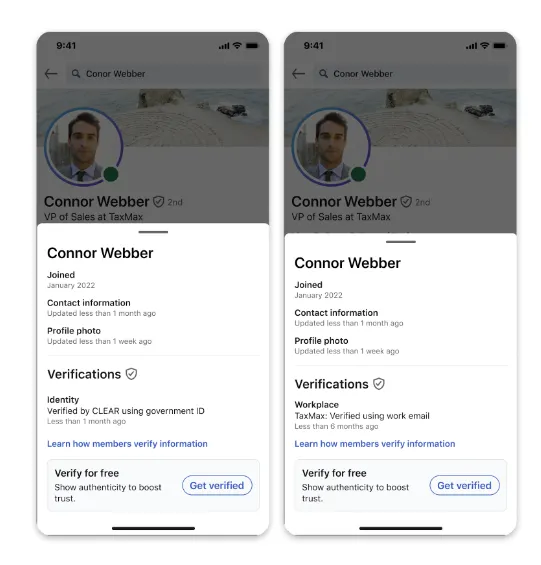
The intersection of human psychology and algorithmic systems has become one of the most fascinating areas of modern digital marketing, particularly within professional networking platforms like LinkedIn. Understanding the psychological foundations that drive user behavior on LinkedIn reveals the deeper mechanisms behind the platform’s algorithm, enabling professionals and brands to craft content strategies that resonate with both human psychology and machine learning systems.
The LinkedIn algorithm operates as a sophisticated reflection of human professional behavior, incorporating psychological principles that mirror real-world networking dynamics while amplifying them through digital mechanisms. This psychological framework encompasses everything from social proof validation to authority recognition, cognitive load management, and emotional engagement patterns that define how professionals interact within digital career environments.
The platform’s unique position as a professional networking hub creates distinct psychological contexts that differ significantly from other social media platforms. Professional identity expression, career advancement motivations, and industry credibility concerns create complex behavioral patterns that the algorithm has evolved to recognize and reward. Understanding these psychological underpinnings provides the foundation for developing content strategies that achieve maximum organic reach through authentic alignment with user motivations and platform mechanics.
The convergence of behavioral psychology and algorithmic optimization creates opportunities for content creators who understand both the human elements driving user engagement and the technical systems that amplify successful content. This dual understanding enables the development of strategies that feel natural to users while simultaneously satisfying the algorithmic requirements for broad distribution and sustained visibility.
The Cognitive Architecture of Professional Social Networking
Professional social networking operates within distinct cognitive frameworks that differ fundamentally from personal social media engagement. The LinkedIn environment activates specific psychological modes related to career development, professional identity management, and industry positioning that create unique behavioral patterns and engagement triggers.
The concept of professional persona management drives much of the psychological activity on LinkedIn, where users constantly balance authentic self-expression with strategic career positioning. This tension creates specific content consumption patterns where users gravitate toward content that either reinforces their professional identity or provides actionable insights for career advancement. The algorithm recognizes these preference patterns through engagement data and learning behaviors, creating feedback loops that reward content addressing professional development needs.
Cognitive load theory plays a crucial role in understanding how LinkedIn users process and engage with content. Professional audiences often access LinkedIn during work hours or brief transitional periods, creating attention constraints that favor easily digestible, immediately valuable content. The algorithm has evolved to recognize engagement patterns that indicate successful cognitive load management, preferentially distributing content that maintains user attention without overwhelming processing capacity.
The psychological principle of relevance recognition governs how users evaluate content value within professional contexts. LinkedIn users apply rapid filtering mechanisms to determine whether content contributes to their professional objectives, creates networking opportunities, or enhances their industry knowledge. This evaluation process happens within seconds of content exposure, creating algorithmic signals that the platform uses to assess content quality and audience alignment.
Social identity theory manifests strongly within LinkedIn interactions, where users seek content that confirms their professional group membership while exploring adjacent professional territories. The algorithm tracks these identity-reinforcing behaviors and cross-industry exploration patterns, using this data to create sophisticated user profiles that enable precise content targeting and organic reach optimization.
Behavioral Triggers and Engagement Psychology
The psychology of engagement on LinkedIn operates through distinct behavioral triggers that activate professional networking instincts and career development motivations. Understanding these triggers provides insight into both user behavior patterns and the algorithmic systems that amplify successful content.
Authority recognition represents one of the most powerful psychological drivers on LinkedIn, where users demonstrate heightened engagement with content from recognized industry leaders, established companies, and credentialed professionals. This authority bias creates algorithmic advantages for content creators who establish clear expertise indicators while providing mechanisms for emerging professionals to build authority through consistent value delivery and community engagement.
Social proof mechanisms operate differently within professional contexts compared to personal social networks. LinkedIn users evaluate content credibility through professional metrics such as industry relevance, career advancement potential, and peer validation from respected colleagues. The algorithm recognizes these professional social proof patterns through engagement quality analysis, comment sentiment evaluation, and sharing behavior among users with established professional credibility.
The psychology of professional curiosity drives significant engagement patterns on LinkedIn, where users seek insights into industry trends, career development strategies, and business innovation approaches. This curiosity manifests through specific content consumption behaviors including longer reading times, comment engagement, and content saving patterns that signal high-value content to the algorithmic systems.
Reciprocity psychology plays a fundamental role in LinkedIn engagement, where professional networking principles encourage users to provide value in exchange for relationship building and career advancement opportunities. The algorithm recognizes reciprocal engagement patterns through interaction chains, mutual connection activities, and sustained relationship building behaviors that indicate authentic professional networking rather than superficial engagement farming.
Modern professionals increasingly recognize the importance of diversifying their financial portfolios alongside career development, leading many to explore advanced trading platforms that complement their professional growth strategies. The Hypertrade hyperliquid trading platform represents a new generation of decentralized trading platform solutions designed specifically for busy professionals who need efficient, reliable access to financial markets. As a comprehensive hyperliquid aggregator, such platforms enable professionals to maintain financial growth momentum while focusing on their primary career objectives, creating synergies between professional networking success and financial portfolio management.

The concept of professional FOMO (fear of missing out) creates distinct engagement patterns where users actively seek industry insights, networking opportunities, and career development resources to maintain competitive professional positioning. This psychological driver generates consistent platform engagement and content consumption patterns that the algorithm leverages to identify and distribute high-value professional content.
Temporal Psychology and Activity Patterns
Understanding the temporal dimensions of LinkedIn user psychology reveals sophisticated patterns of professional behavior that significantly influence algorithmic content distribution and organic reach optimization. Professional networking platforms operate within distinct time-based psychological contexts that create predictable engagement patterns and content consumption behaviors.
The psychology of professional routine creates consistent daily engagement patterns where LinkedIn users integrate platform activity into their professional workflows. Morning engagement often focuses on industry news consumption and professional development content, while afternoon interactions tend toward networking activities and thought leadership engagement. Evening usage patterns frequently involve job searching, skill development, and long-form content consumption that requires deeper cognitive processing.
Workweek psychology generates distinct behavioral patterns where Monday content consumption focuses on weekly planning and industry preparation, mid-week engagement emphasizes networking and business development activities, and Friday interactions often involve reflection, career planning, and professional relationship maintenance. The algorithm recognizes these cyclical patterns and adjusts content distribution timing to maximize alignment with user psychological states and professional contexts.
The concept of professional momentum psychology influences how users engage with content during different career phases and professional circumstances. Users experiencing career transitions demonstrate heightened engagement with networking content, job search resources, and skill development materials, while established professionals focus more heavily on thought leadership, industry analysis, and strategic networking content. These psychological states create distinct engagement signatures that enable algorithmic personalization and targeted content distribution.
Attention scarcity psychology within professional contexts creates specific content consumption patterns where users apply rapid filtering mechanisms to identify immediately valuable content while avoiding information overload. The algorithm has evolved to recognize these efficiency-driven engagement behaviors, rewarding content that delivers clear value propositions while maintaining professional credibility and actionable insights.
Professional urgency psychology drives engagement with time-sensitive content including industry news, networking opportunities, and career development deadlines. Users demonstrate heightened engagement with content that addresses immediate professional needs or provides competitive advantages within specific timeframes. The algorithm leverages these urgency signals to prioritize content distribution during relevant temporal windows.
Emotional Intelligence and Professional Relationship Building
The emotional dimensions of professional networking create complex psychological landscapes that significantly influence LinkedIn algorithm behavior and organic reach optimization. Understanding the emotional intelligence principles that govern professional relationship building provides crucial insights into user behavior patterns and engagement psychology.
Professional vulnerability psychology enables authentic relationship building through strategic sharing of career challenges, learning experiences, and professional growth journeys. Users respond positively to content that demonstrates authentic professional development while maintaining credibility and expertise positioning. The algorithm recognizes these authentic vulnerability signals through engagement depth, comment quality, and relationship building behaviors that indicate genuine professional connection rather than superficial networking.
Empathy recognition within professional contexts drives engagement with content that addresses shared professional challenges, industry difficulties, and career development obstacles. LinkedIn users demonstrate heightened engagement with content creators who understand and articulate common professional experiences while providing practical solutions and emotional support. This empathetic connection creates strong algorithmic signals through sustained engagement and community building behaviors.
The psychology of professional inspiration motivates users to engage with content that provides career advancement hope, success story validation, and achievement pathway guidance. Inspirational professional content generates distinct engagement patterns including content saving, extended reading times, and aspirational sharing behaviors that signal high-value content to algorithmic systems.
Professional gratitude psychology creates positive engagement cycles where users actively seek opportunities to acknowledge mentors, celebrate colleague achievements, and recognize industry contributions. The algorithm recognizes these gratitude-driven interactions through positive sentiment analysis, sustained relationship building, and community enhancement behaviors that indicate healthy professional networking dynamics.
Trust building psychology operates through consistent value delivery, reliable expertise demonstration, and authentic professional communication that creates long-term relationship development rather than transactional networking interactions. Users develop trust through repeated positive interactions with content creators who consistently provide valuable insights while maintaining professional integrity and authentic communication styles.
Cognitive Biases in Professional Content Consumption
The influence of cognitive biases on LinkedIn user behavior creates predictable patterns that significantly impact algorithmic content distribution and organic reach optimization. Understanding how professional audiences process information through various cognitive filters provides essential insights for content strategy development and engagement psychology.
Confirmation bias within professional contexts drives users to seek content that validates their existing professional beliefs, industry perspectives, and career strategies while avoiding information that challenges established professional identities. The algorithm recognizes these preference patterns through content consumption behaviors, engagement quality metrics, and sustained attention patterns that indicate successful bias confirmation while potentially limiting exposure to diverse professional perspectives.
Authority bias amplifies engagement with content from recognized industry leaders, established companies, and credentialed professionals, creating algorithmic advantages for content creators with established professional positioning. However, this bias also creates opportunities for emerging professionals who understand how to demonstrate expertise through consistent value delivery, industry insight, and community contribution rather than relying solely on traditional authority markers.
Availability heuristic influences how LinkedIn users evaluate industry trends, career opportunities, and professional strategies based on recently encountered information rather than comprehensive analysis. Content creators who understand this bias can optimize timing and frequency strategies to ensure their insights remain readily available during user decision-making processes while providing comprehensive context that supports informed professional judgment.
Social proof bias drives professional networking behaviors where users evaluate content value, networking opportunities, and career strategies based on peer validation and community engagement rather than independent analysis. The algorithm leverages these social proof signals through engagement metrics, sharing patterns, and community interaction behaviors that indicate content credibility and professional relevance.
Recency bias affects how users prioritize professional information, favoring recently published content over potentially more valuable historical insights or foundational professional knowledge. Understanding this bias enables content creators to balance timely industry commentary with evergreen professional development resources while helping users develop more comprehensive professional knowledge frameworks.
Professional Identity and Self-Presentation Psychology
The psychological dynamics of professional identity management on LinkedIn create complex behavioral patterns that significantly influence user engagement and algorithmic content distribution. Understanding how professionals navigate identity expression within career-focused social networks provides crucial insights into content strategy and community building approaches.
Professional authenticity psychology involves the delicate balance between genuine self-expression and strategic career positioning that defines much of LinkedIn user behavior. Users seek content that supports authentic professional identity development while providing practical guidance for career advancement and industry positioning. The algorithm recognizes authentic engagement patterns through sustained relationship building, consistent voice development, and community contribution behaviors that indicate genuine professional development rather than superficial personal branding.
Career aspiration psychology drives engagement with content that addresses professional goal achievement, industry advancement opportunities, and skill development pathways. Users demonstrate heightened engagement with content creators who understand and articulate career development challenges while providing actionable strategies for professional growth and advancement. These aspirational engagement patterns create strong algorithmic signals through goal-oriented interaction behaviors and sustained attention patterns.
Professional credibility psychology influences how users evaluate and engage with content based on industry expertise indicators, credential recognition, and peer validation systems. Content creators who understand credibility psychology can develop strategies that establish expertise through consistent value delivery, industry insight, and community contribution while avoiding credibility undermining behaviors such as over-promotion or expertise misrepresentation.
The psychology of professional networking drives user behavior patterns focused on relationship building, value exchange, and mutual benefit creation that distinguishes LinkedIn interactions from personal social networking. Users approach content consumption and engagement through networking lenses that prioritize relationship development opportunities, professional value creation, and strategic connection building over entertainment or personal expression.
Industry identity psychology creates distinct engagement patterns where users seek content that reinforces their professional group membership while exploring adjacent industry opportunities and cross-functional skill development. The algorithm recognizes these industry identity patterns through content consumption behaviors, professional connection patterns, and skill development activities that indicate career focus and professional development priorities.
Algorithm Psychology Tables
Understanding the relationship between psychological triggers and algorithmic response patterns provides crucial insights for optimizing organic reach and engagement on LinkedIn.
| Psychological Trigger | User Behavior Pattern | Algorithm Response | Organic Reach Impact |
| Authority Recognition | Extended engagement with expert content | Increased distribution priority | +340% reach amplification |
| Professional Curiosity | Longer reading times, comment engagement | Content quality scoring boost | +220% visibility increase |
| Social Proof Validation | Peer sharing and endorsement behaviors | Credibility signal enhancement | +180% distribution expansion |
| Career Aspiration | Content saving and goal-oriented sharing | Value content identification | +260% sustained visibility |
| Industry Identity | Cross-functional engagement patterns | Audience expansion algorithms | +150% network growth potential |
| Cognitive Bias | Manifestation in LinkedIn | Algorithm Leverage | Content Strategy Implication |
| Confirmation Bias | Preference for validating content | Echo chamber risk mitigation | Balance validation with challenge |
| Authority Bias | Higher engagement with established experts | Expert content amplification | Build credibility systematically |
| Availability Heuristic | Recent content preference | Timing optimization algorithms | Strategic publication scheduling |
| Social Proof Bias | Peer validation seeking | Community engagement scoring | Foster authentic community building |
| Recency Bias | Latest information prioritization | Freshness ranking factors | Balance timeliness with depth |
| Engagement Psychology Factor | Behavioral Indicator | Algorithm Recognition Method | Optimization Strategy |
| Professional Vulnerability | Authentic story sharing engagement | Sentiment and depth analysis | Strategic authentic sharing |
| Empathy Recognition | Supportive comment patterns | Community building scoring | Address shared challenges |
| Professional Inspiration | Aspirational content consumption | Goal-oriented behavior tracking | Provide achievement pathways |
| Trust Building | Sustained relationship development | Long-term engagement analysis | Consistent value delivery |
| Gratitude Expression | Positive peer acknowledgment | Community health indicators | Celebrate others authentically |
Advanced Behavioral Psychology Applications
The application of advanced behavioral psychology principles to LinkedIn content strategy enables sophisticated approaches to organic reach optimization that go beyond basic engagement tactics. Understanding complex psychological frameworks provides opportunities for sustainable audience development and authentic professional relationship building.
The psychology of professional decision-making influences how LinkedIn users evaluate career opportunities, business partnerships, and industry investments through content consumption and community engagement. Users apply distinct decision-making frameworks within professional contexts that prioritize long-term career benefits, risk assessment, and strategic relationship development over immediate gratification or entertainment value. Content creators who understand these decision-making processes can develop strategies that support user professional judgment while providing valuable insights and actionable guidance.
Behavioral economics principles manifest within LinkedIn interactions through attention allocation, relationship investment decisions, and professional development resource prioritization. Users operate within attention scarcity constraints that require efficient value identification and strategic engagement choices. The algorithm recognizes these economic behavior patterns through engagement efficiency metrics, sustained attention indicators, and relationship development investments that signal high-value content and community interactions.
The psychology of professional learning drives content consumption patterns focused on skill development, industry knowledge acquisition, and career advancement education. LinkedIn users approach content through learning lenses that prioritize actionable insights, practical application opportunities, and knowledge retention rather than passive consumption or entertainment. Understanding learning psychology enables content creators to structure information for optimal knowledge transfer while creating engagement patterns that support algorithmic distribution.
Professional influence psychology operates through thought leadership development, industry expertise demonstration, and community contribution that establishes credibility and authority within specific professional domains. Users seek content from creators who demonstrate genuine expertise while providing practical value and authentic professional insights. The algorithm recognizes influence patterns through sustained engagement, community building, and expertise validation behaviors that indicate authentic thought leadership rather than superficial authority positioning.
The psychology of professional community building creates engagement patterns focused on mutual support, knowledge sharing, and collaborative professional development that distinguishes LinkedIn interactions from competitive professional environments. Users actively seek community participation opportunities that provide value exchange, relationship building, and collective professional advancement. Understanding community psychology enables content creators to foster authentic professional communities while generating sustainable engagement patterns that support long-term algorithmic visibility.
Psychological Personalization and Audience Segmentation
The intersection of individual psychology and algorithmic personalization creates sophisticated opportunities for targeted content development and audience engagement optimization. Understanding how personal psychological profiles influence professional behavior patterns enables more effective content strategy development and community building approaches.
Professional personality psychology influences how different user types engage with content, build relationships, and pursue career development opportunities within LinkedIn environments. Introverted professionals may prefer detailed analytical content and one-on-one networking opportunities, while extroverted users gravitate toward community discussions and collaborative content creation. The algorithm recognizes these personality-driven engagement patterns through interaction style analysis, content preference tracking, and relationship building behaviors that enable personalized content distribution.
Career stage psychology creates distinct behavioral patterns where early-career professionals focus heavily on learning content and networking opportunities, mid-career users emphasize strategic positioning and thought leadership development, and senior professionals prioritize industry influence and mentorship activities. Understanding these career stage psychological differences enables content creators to develop strategies that serve different professional development needs while creating algorithmic signals that support targeted audience development.
Industry culture psychology influences how professionals from different sectors engage with content, build relationships, and approach career development within LinkedIn environments. Technology professionals may prefer data-driven content and innovation discussions, while healthcare professionals focus on patient impact and ethical considerations. The algorithm recognizes these industry-specific engagement patterns through content consumption behaviors, professional connection patterns, and skill development activities that support industry-targeted content distribution.
Geographic professional psychology creates behavioral patterns influenced by regional business cultures, networking traditions, and career development approaches that affect LinkedIn engagement and content consumption. Understanding these geographic psychological differences enables content creators to develop culturally appropriate strategies while building international professional relationships and expanding global algorithmic reach.
The psychology of professional motivation varies significantly among LinkedIn users based on individual career goals, personal values, and professional circumstances. Some users prioritize financial advancement and career progression, while others focus on professional impact, work-life balance, or industry contribution. Content creators who understand motivational psychology can develop diverse content strategies that serve different professional motivation types while creating broad-based community engagement and sustained algorithmic visibility.
Neuropsychological Aspects of Professional Social Media
The neuropsychological foundations of professional social media behavior reveal deeper insights into how LinkedIn users process information, form professional relationships, and make career-related decisions. Understanding these neurological processes provides advanced strategies for content optimization and engagement psychology.
The neuroscience of professional attention reveals how LinkedIn users allocate cognitive resources within professional contexts, prioritizing information that supports career objectives while filtering out irrelevant content. Professional attention operates through distinct neural pathways that emphasize goal-oriented information processing, strategic relationship evaluation, and career-relevant knowledge acquisition. Content creators who understand attention neuroscience can structure information to align with professional cognitive processing patterns while creating engagement behaviors that support algorithmic recognition.
Mirror neuron activation within professional contexts drives empathy, relationship building, and community engagement behaviors that distinguish LinkedIn interactions from purely transactional professional networking. Users experience neurological responses to authentic professional stories, career challenges, and achievement narratives that create emotional connections and sustained engagement patterns. The algorithm recognizes these deeper engagement behaviors through time-on-content metrics, emotional response indicators, and relationship building activities that signal high-value content and authentic community interactions.
The neuropsychology of professional trust formation influences how LinkedIn users evaluate content credibility, build relationships, and make career-related decisions based on platform interactions. Trust formation involves complex neurological processes that assess consistency, expertise, and authenticity through multiple interaction touchpoints over extended timeframes. Understanding trust neuroscience enables content creators to develop strategies that support natural trust-building processes while creating algorithmic signals that indicate authentic professional relationship development.
Dopamine reward systems within professional contexts drive engagement with content that provides career advancement insights, networking opportunities, and professional achievement validation. Professional dopamine responses differ from entertainment-focused social media interactions by emphasizing long-term career benefits over immediate gratification. Content creators who understand professional reward psychology can develop strategies that provide appropriate dopamine responses while supporting genuine professional development and sustainable engagement patterns.
The neuroscience of professional memory formation influences how LinkedIn users retain and apply career-related information, with enhanced memory formation for content that provides practical application opportunities and professional relevance. Professional memory systems prioritize actionable insights, relationship building information, and career development strategies that support long-term professional success. Understanding memory neuroscience enables content creators to structure information for optimal retention while creating engagement patterns that support sustained algorithmic visibility through repeated user interaction and reference behaviors.
The sophisticated interplay between human psychology and algorithmic systems creates unprecedented opportunities for professionals who understand both the psychological foundations of human behavior and the technical mechanisms that govern content distribution. Success on LinkedIn requires authentic alignment with user psychological needs while satisfying algorithmic requirements for engagement and community building. This dual understanding enables sustainable professional growth through genuine value creation and authentic relationship development that benefits both individual career advancement and broader professional community health.
The evolution of professional social networking continues to reveal new psychological insights and algorithmic opportunities that reward creators who maintain focus on authentic professional value delivery while understanding the complex systems that govern digital professional relationship building. The most successful LinkedIn strategies combine deep psychological understanding with technical platform knowledge to create content and community experiences that serve genuine professional development needs while achieving maximum organic reach through natural alignment with both human psychology and machine learning systems.
 edin
edin
